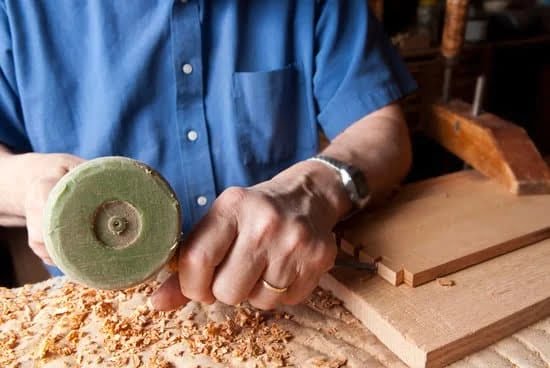Are you interested in learning how to use resin in woodworking? Resin has become a popular choice for woodworkers looking to add unique and eye-catching elements to their projects.
From creating beautiful designs to adding durability, resin can be a game-changer in the world of woodworking. In this article, we will explore the different types of resin available for woodworking projects, as well as provide step-by-step instructions on how to effectively use resin to enhance your creations.
Resin is a versatile material that can be used in various ways to enhance the beauty and functionality of wood. Whether you are making furniture, wall art, or decorative pieces, understanding the properties and uses of resin will open up a whole new world of possibilities for your woodworking projects. By learning the techniques and best practices for using resin, you can take your woodworking skills to the next level and create truly unique and stunning pieces.
In this comprehensive guide, we will cover everything from preparing the wood surface for resin application to mixing and pouring resin for woodworking. Additionally, we will discuss how to create one-of-a-kind designs with resin, as well as provide tips and tricks for achieving professional results.
Whether you are new to working with resin or looking to improve your skills, this article will give you the knowledge and confidence to incorporate resin into your woodworking projects with ease. So let’s dive in and explore the exciting world of using resin in woodworking.
Understanding the Different Types of Resin for Woodworking Projects
Resin is a versatile material that can be used to enhance and protect woodworking projects. There are different types of resin available, each with its own unique properties and uses in woodworking. Understanding the different types of resin is essential for choosing the right one for your woodworking project.
One common type of resin used in woodworking is epoxy resin. Epoxy resin is known for its strong adhesive properties, making it ideal for bonding wood together or filling in cracks and imperfections. It also has excellent resistance to moisture and chemicals, making it a popular choice for sealing and protecting wood surfaces.
Another type of resin commonly used in woodworking is polyester resin. Polyester resin is a more affordable option compared to epoxy resin, but it does not have the same strength or durability. It is often used for creating decorative elements and coatings on wood, as well as for casting small objects.
Additionally, there are other specialty resins such as polyurethane resin and casting resin that have specific applications in woodworking. Polyurethane resin offers flexibility and UV resistance, making it suitable for outdoor wood projects, while casting resin is designed for creating intricate molds and replicas.
Understanding the different types of resin available will help you choose the right one for your woodworking project based on its intended use, durability requirements, and budget constraints.
When learning how to use resin in woodworking, it’s crucial to understand the characteristics of each type of resin so that you can select the best one suited for your specific project needs. Whether you are looking to seal and protect wood surfaces or create unique designs with resin, choosing the right type of resin will ultimately determine the success of your woodworking project.
Preparing the Wood Surface for Resin Application
When using resin in woodworking, it is essential to properly prepare the wood surface before applying the resin. This step is crucial in ensuring a successful and long-lasting resin coating on your woodworking project. Here are some steps to follow when preparing the wood surface for resin application:
1. Sand the Wood: Begin by sanding the wood surface to create a smooth and even texture. Use fine-grit sandpaper to remove any imperfections, rough spots, or previous finish that may interfere with the adhesion of the resin.
2. Clean the Surface: After sanding, it is important to thoroughly clean the wood surface to remove any dust, dirt, or debris. Use a tack cloth or a damp cloth to wipe down the surface and ensure it is free from any contaminants that could affect the resin application.
3. Seal any Gaps: Check for any cracks, knots, or gaps in the wood and seal them using wood fillers or epoxy. This will prevent any air bubbles from forming under the resin once it is applied.
4. Apply a Sealer Coat: To prevent air bubbles from forming during resin application, consider applying a sealer coat of epoxy or polyurethane on the wood surface. This will also help improve adhesion and create a more uniform appearance of the finished project.
By following these steps, you can effectively prepare your wood surface for resin application in your woodworking projects. Taking the time to properly prepare the wood will result in a professional-looking and durable resin-coated finish that enhances the beauty of your woodworking creations.
Mixing and Pouring Resin for Woodworking
Resin is a versatile and durable material that can be used to create stunning and unique designs in woodworking projects. When it comes to using resin in woodworking, one of the most important steps is mixing and pouring the resin onto the wood surface. This process can seem intimidating at first, but with the right techniques and preparation, you can achieve beautiful results.
Choosing the Right Resin
Before you begin mixing and pouring resin onto your woodworking project, it’s crucial to choose the right type of resin for your specific needs. There are different types of resin available, such as epoxy resin, polyester resin, and polyurethane resin. Each type has its own unique properties and uses, so it’s important to select the one that best suits your project.
Mixing the Resin
Once you have selected the appropriate resin for your project, it’s time to mix it according to the manufacturer’s instructions. Most resins require thorough mixing of two components – the resin itself and a hardener. It’s important to carefully measure out the correct ratio of resin to hardener and mix them together thoroughly to ensure optimal curing and strength.
Pouring the Resin
After you have mixed the resin properly, it’s time to pour it onto the prepared wood surface. When pouring resin, make sure to do so in a well-ventilated area and follow safety precautions such as wearing gloves and a mask.
Use a steady hand to pour the mixed resin onto the wood, spreading it evenly with a spreader or brush if necessary. Be mindful of any drips or spills, as they can be difficult to correct once the resin starts to cure.
By following these steps and techniques for mixing and pouring resin in woodworking projects, you can create stunning designs that enhance the natural beauty of wood while adding strength and durability for long-lasting results.
Creating Unique Designs With Resin in Woodworking
When it comes to woodworking, incorporating resin can add a whole new dimension to your projects. Creating unique designs with resin in woodworking allows for endless possibilities and creativity. Whether you’re looking to add a colorful touch to a tabletop or create stunning patterns in a cutting board, resin can elevate your woodworking projects to the next level.
Choosing the Right Resin
Before you start creating unique designs with resin in woodworking, it’s important to understand the different types of resin available. Epoxy resin is commonly used for woodworking projects due to its durability and clarity, making it perfect for encapsulating objects or creating transparent coatings. On the other hand, polyester resin is often used for adding color and texture to wood since it can be easily tinted and manipulated.
Experimenting With Color and Texture
One of the most exciting aspects of using resin in woodworking is the ability to experiment with color and texture. By adding pigments or dyes to your resin mixture, you can create custom colors that complement your woodwork. Additionally, incorporating various materials such as glitter, crushed gemstones, or even wood shavings into the resin can offer unique texture and visual interest.
Creating Patterns and Inlays
Resin can be utilized in woodworking to create intricate patterns and inlays that would otherwise be impossible with just wood. From swirling marble effects to geometric shapes, the possibilities are endless when it comes to designing with resin. Utilizing molds or free-form pouring techniques allows you to customize your designs according to your preferences and vision.
By understanding how to use resin in woodworking for creating unique designs, you can explore boundless opportunities for expressing creativity through your woodworking projects. Whether you’re aiming for a bold statement piece or subtle embellishments on your pieces, mastering the art of working with resin will undoubtedly take your craftsmanship skills to new heights.
Sanding and Finishing the Resin Coated Wood
After the resin has cured, the next step in using resin in woodworking is to sand and finish the coated wood. Sanding is essential to achieve a smooth and even surface, as well as to remove any drips, runs, or imperfections from the resin application. Begin by using a low-grit sandpaper to level out any uneven areas and remove any excess resin. As you progress, switch to a higher grit sandpaper for a finer finish.
Once the sanding process is complete, it’s important to thoroughly clean the wood to remove any dust or debris before applying a finish. There are various finishing options for resin-coated wood, including varnish, lacquer, or epoxy topcoats. Each option offers different levels of durability and sheen, so consider your project’s specific needs when choosing a finish.
In addition to traditional finishes, another method for enhancing the appearance of resin-coated wood is through polishing. A high-quality polish can bring out the natural beauty of the wood and enhance the clarity and depth of the resin. By carefully sanding and selecting an appropriate finish or polish for your project, you can achieve professional-looking results that highlight the unique features of resin in woodworking.
Remember that proper safety precautions should be taken when working with resins and finishing products. Always work in a well-ventilated area and wear protective gear such as gloves and a mask to minimize exposure to harmful fumes or particles. Following these steps will ensure that your resin-coated woodworking projects are not only visually stunning but also safe for both you and others around you.
Tips and Tricks for Using Resin in Woodworking
Resin can add a beautiful and unique touch to woodworking projects, but it can also be tricky to work with if you’re not familiar with the process. Here are some tips and tricks for using resin in woodworking to help ensure that your projects turn out just the way you want them.
First, it’s important to choose the right type of resin for your specific project. There are different types of resin available, each with its own set of characteristics and uses. Epoxy resin is known for its durability and ability to create a glass-like finish, while polyester resin is more affordable and cures quickly. Understanding the differences between these types of resin will help you determine which one is best suited for your woodworking project.
Another important tip is to properly prepare the wood surface before applying the resin. This includes sanding the wood to create a smooth surface, as well as ensuring that the wood is free from dust or debris. Additionally, sealing any cracks or holes in the wood will prevent the resin from leaking through and creating unwanted blemishes in your final piece.
When mixing and pouring resin, it’s crucial to follow the manufacturer’s instructions carefully. Proper measurements and thorough mixing are essential for achieving a successful result. Taking your time during this step will help minimize potential issues such as air bubbles or uneven curing. Finally, after the resin has cured, sanding and finishing the surface will give your woodworking project a professional look.
Lastly, wearing appropriate safety gear when working with resin is crucial to protect yourself from harmful fumes. A well-ventilated workspace is also important to prevent inhaling potentially toxic vapors.
| Tips | Tricks |
|---|---|
| Choose the right type of resin for your project | Properly prepare the wood surface before applying the resin |
| Follow manufacturer’s instructions carefully when mixing and pouring resin | Wear appropriate safety gear when working with resin |
Common Mistakes to Avoid When Using Resin in Woodworking
When using resin in woodworking, it’s important to be aware of some common mistakes that can occur during the application and curing process. One of the most common mistakes is not properly preparing the wood surface for resin application. Failure to do so can result in uneven coating, adhesion issues, or even air bubbles being trapped underneath the resin.
Another mistake to avoid is not thoroughly mixing the resin and hardener. Properly mixing the two components is crucial for ensuring a strong and durable bond as well as a consistent finish. Failing to mix the resin and hardener properly can lead to soft spots or areas where the resin doesn’t cure properly.
Additionally, it’s important to avoid overpouring resin onto the wood surface. Overpouring can lead to unnecessary waste of materials and can also cause spills and messes that are difficult to clean up. It’s important to carefully measure and pour the appropriate amount of resin for your project to achieve the desired result.
By being aware of these common mistakes and taking proactive measures to prevent them, woodworkers can ensure successful and satisfying results when using resin in their woodworking projects.
Safety Precautions When Working With Resin in Woodworking
Resin is a versatile material that can add beauty and functionality to woodworking projects. However, it’s important to take safety precautions when working with resin to ensure a safe and successful project. Here are some key safety measures to keep in mind when using resin in woodworking.
First and foremost, always work in a well-ventilated area when using resin. The fumes emitted from the resin can be harmful if inhaled, so it’s crucial to have good airflow in the workspace. Consider working near an open window or using a fan to help dissipate the fumes.
Additionally, it’s important to wear appropriate personal protective equipment (PPE) when working with resin. This includes gloves, safety glasses, and a respirator to protect against any potential skin contact, eye irritation, or inhalation of fumes. These simple protective measures can make a big difference in ensuring your safety while working with resin.
Finally, be mindful of proper disposal of resin waste and cleaning supplies. Resin can be harmful to the environment if not disposed of properly, so be sure to follow local regulations for hazardous waste disposal. When cleaning up after using resin, use disposable materials whenever possible and avoid pouring excess resin down the drain.
| Safety Measure | Importance |
|---|---|
| Well-ventilated area | Crucial for avoiding inhaling harmful fumes |
| Wear PPE | Protects against skin contact, eye irritation, and inhalation of fumes |
| Proper disposal | Avoids harm to the environment and follows local regulations |
Conclusion
In conclusion, the use of resin in woodworking opens up a world of possibilities for creating unique and stunning pieces. Whether you are a seasoned woodworker or just starting out, understanding the different types of resin, proper application techniques, and safety precautions is essential to achieving successful results. By following the steps outlined in this guide, anyone can learn how to use resin in woodworking to enhance their projects.
Resin allows woodworkers to add a touch of creativity and flair to their designs. From creating colorful river tables to adding intricate designs or filling in cracks and knots, resin offers endless opportunities for customization. By mixing and pouring resin onto wood surfaces, artisans can achieve stunning effects that add depth and character to their creations.
As with any new technique, practice makes perfect when it comes to using resin in woodworking. Take the time to experiment with different colors, techniques, and finishes to discover what works best for your individual style and projects.
Additionally, be sure to take note of common mistakes to avoid when working with resin – such as improper mixing or curing – which can impact the final outcome of your piece. With patience and dedication, mastering how to use resin in woodworking can elevate your craftsmanship and set your work apart from the rest.
Frequently Asked Questions
Can You Pour Resin Straight Onto Wood?
Pouring resin straight onto wood is a common practice in woodworking and crafting. It can be used to create a glossy, protective finish on wooden surfaces. However, it’s important to properly prepare the wood to ensure good adhesion.
How Do You Apply Resin to Wood?
To apply resin to wood, you first need to prepare the surface by sanding it and removing any dust or debris. Then, mix the resin according to the manufacturer’s instructions and pour it onto the wood. Use a spreader or brush to evenly coat the surface and remove any air bubbles.
What Is Resin Used for in Woodworking?
Resin is commonly used in woodworking for several purposes. It can be used as a protective finish to enhance the natural beauty of the wood and provide durability against moisture and wear.
Additionally, resin can also be used for creating decorative elements or filling in gaps and cracks in the wood for a smooth finish. Overall, resin is a versatile material that adds both aesthetic appeal and functionality to woodworking projects.

Hi everyone! I’m a woodworker and blogger, and this is my woodworking blog. In my blog, I share tips and tricks for woodworkers of all skill levels, as well as project ideas that you can try yourself.





